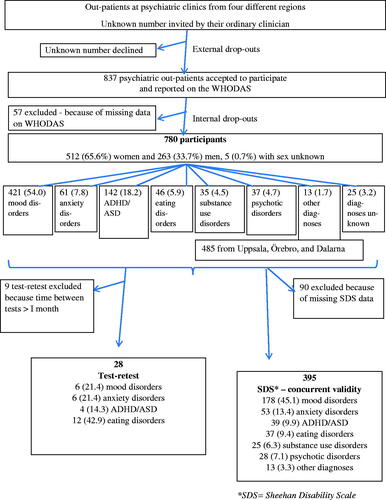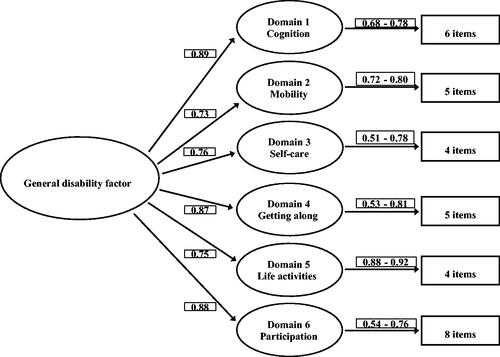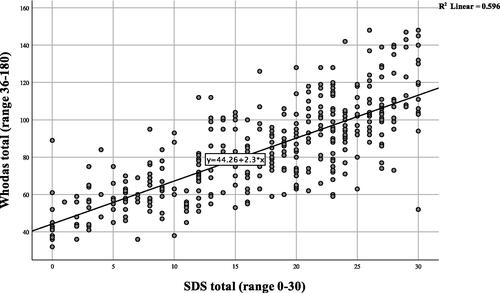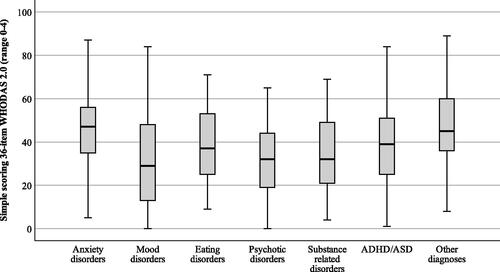Figures & data
Figure 1. Description of study sample, the recruitment process and diagnostic characteristics of the final sample and the test–retest sample, n (%).

Table 1. Ratings on the 36-item WHODAS 2.0 in Swedish psychiatric outpatients (N = 780), range 0–4.
Figure 2. Confirmatory Factor analysis, using 32-items of the original WHODAS 2.0 scale, leaving out items D5.5 through D5.8, Domains 1–6 corresponds to: cognition, mobility, self-care, getting along, life activities, and participation.



